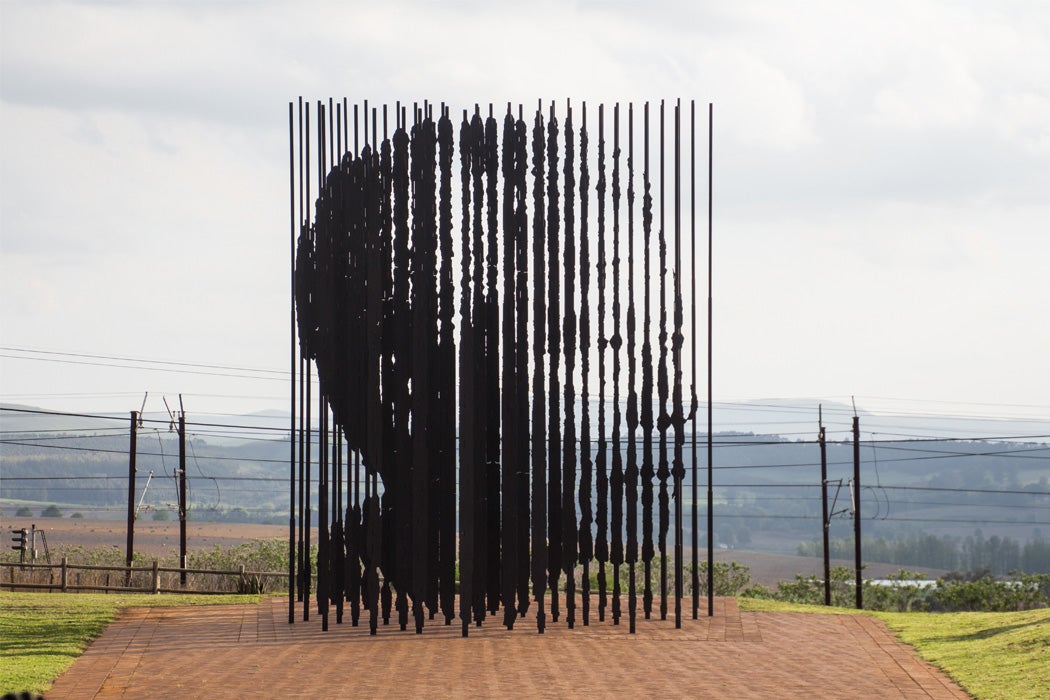Earlier this month, the South African city of Johannesburg hosted the Global Citizen Festival: Mandela 100, a star-studded celebration of the 100th anniversary of Nelson Mandela’s birthday, which also coincided with the five year anniversary of his death.
In 2014, just one year after Mandela’s death, art historian Steven Nelson explored the lasting imagery of Nelson Mandela. Nelson analyzes a variety of images of the iconic leader ranging from kitsch tourist souvenirs to memes to high art. Using Samuel Fosso’s self-portraits from his African Spirits series as a case study, he examines Fosso’s portrait as a simulation of Mandela himself.
Nelson unpacks the myth of Mandela, examining the ways in which Mandela’s image has changed and moved between “visibility and invisibility,” as his image was banned in South Africa during apartheid. “Although Mandela’s physical body, which has succumbed to the vicissitudes of age and sickness, is no longer here, his mythical body remains.”
He also examines the concept of hypervisibility—which Sean O’Toole defines “as being equally based on both the lack of images of the leader in circulation, as well as the explosion of images that would bury the ‘real’ Mandela.” We see this with other activists and icons whose images are proliferated, as with the seemingly exponential images of Frida Kahlo, celebrated among “Fridolotrists.” The image takes on a life of its own.
Nelson posits two driving questions: “What do pictures of Nelson Mandela want?” (referring to W. J. T. Mitchell’s famed title, What Do Pictures Want?); and “What do we want from images of Nelson Mandela?”
Nelson is specifically “interested in understanding how we live with images of Mandela, how they move us, and what kind of worlds they build.” Nelson describes how, through a cacophony of Mandela imagery, consumers and fans occupy the idea of him. “Quite simply, in consuming the image of Mandela, we gain at least partial access to the world that we imagine his mythic body—the Ideal of him—as occupying.”
Get Our Newsletter
In considering what differentiates images of Mandela from those of other other leaders, artists, activists, and pop culture icons, Nelson ultimately argues something quite simple, and yet deeply impactful: “Mandela lived.” He is not a martyr for a cause, dying at an early age, but is instead a dedicated, long-lasting fighter and survivor who lived to be 95 years old.
Nelson describes how Mandela’s “images speak only to survival and ultimate victory.” Images of Mandela in both the prime of his youth and his death offer viewers a possibility — one that in Nelson’s words, is “part of the power and the paradox of pictures.” He continues, “We want these images because we believe in the leader; we have subscribed to the myth for which his face has become a metonym. It is also part of the way we continue to lionize rulers through their images in an archaic, almost religious fashion. It is also part of faith. It is also part of love.”







